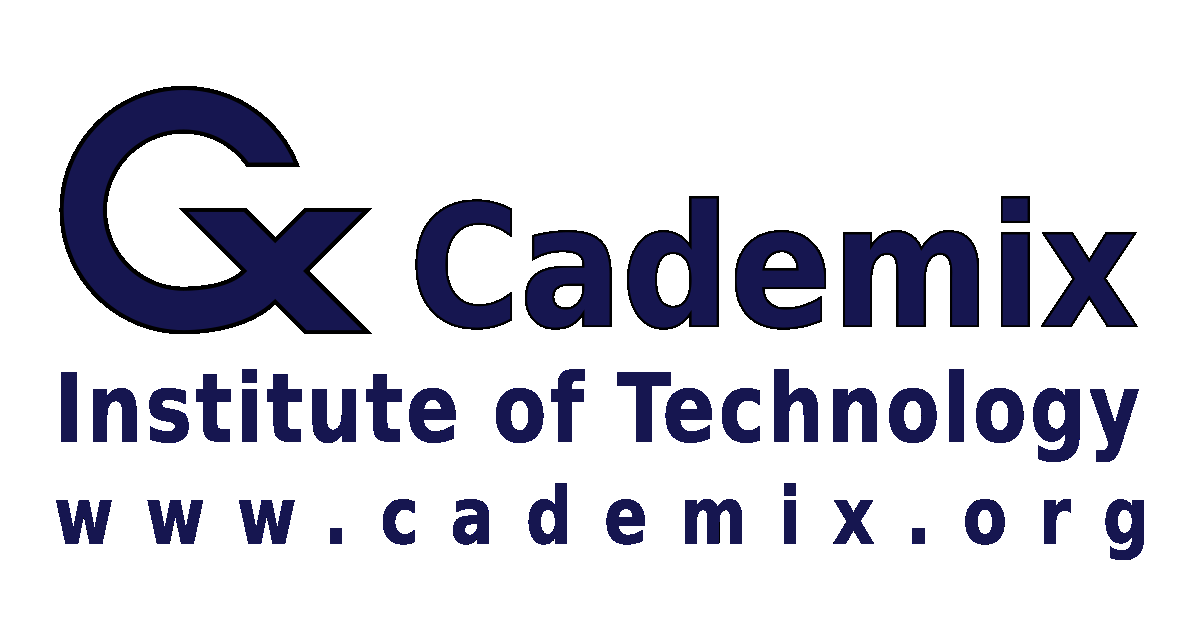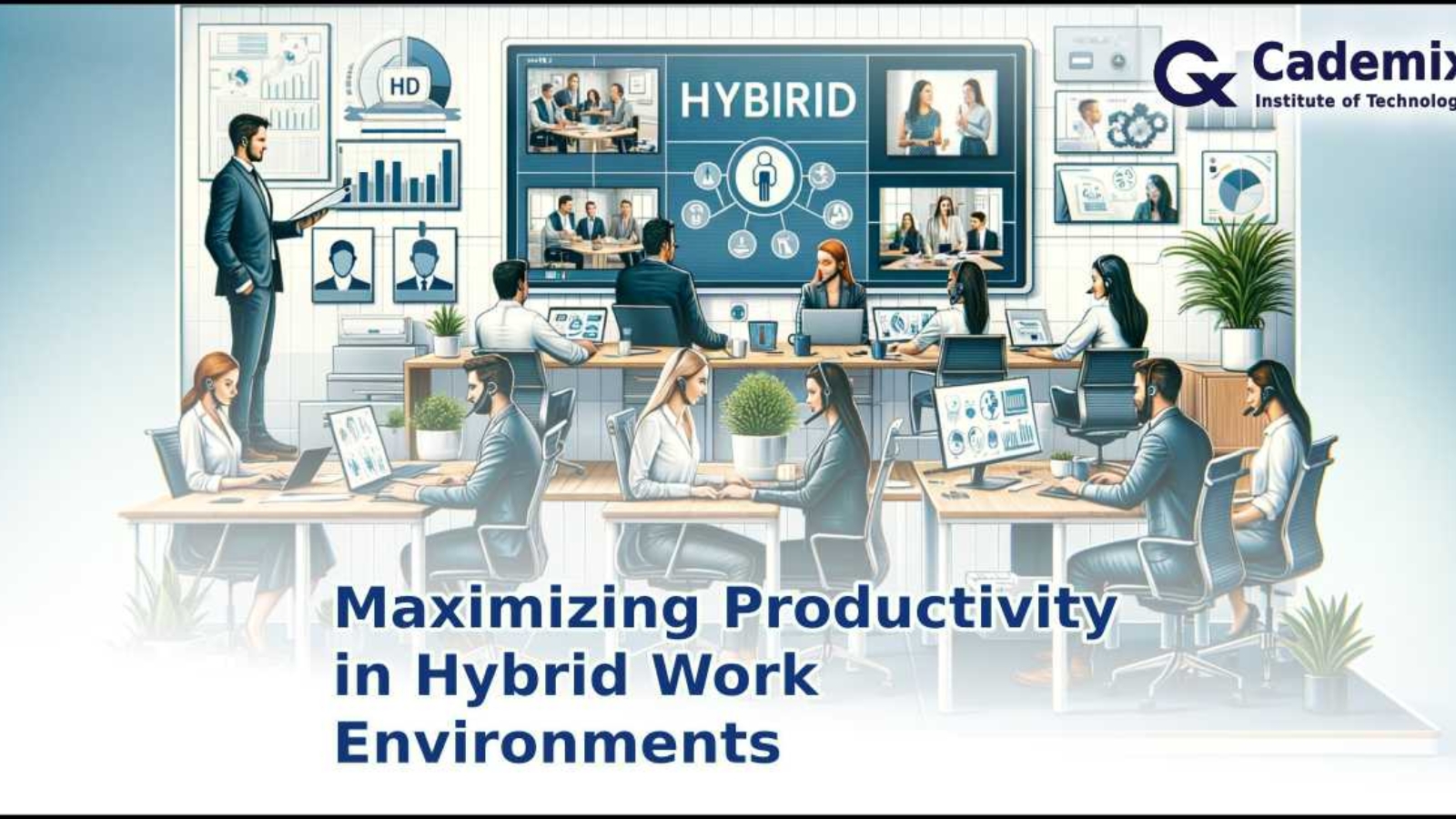This article explores effective strategies for maximizing productivity in hybrid work environments, blending remote and in-office settings. It addresses the unique challenges and opportunities presented by hybrid work models and offers practical solutions to enhance efficiency and team cohesion.
Cademix Editorial Board

Establishing Effective Hybrid Work Policies
Crafting Flexible yet Structured Work Guidelines
Developing clear policies is crucial for the success of hybrid work environments. This subsection examines the key components of effective hybrid work policies. It discusses establishing guidelines that offer flexibility while maintaining structure, including defining core hours, setting expectations for in-office and remote days, and outlining communication protocols. The focus is on creating policies that cater to both organizational goals and employee needs, fostering a productive and adaptable work environment.
Balancing Remote and In-Office Work Requirements
Balancing the demands of remote and in-office work is a critical aspect of hybrid models. This subsection delves into strategies for achieving this balance. It covers how to allocate tasks and projects based on their suitability for remote or in-office work, ensuring equitable distribution of work, and managing team dynamics to prevent any sense of disparity between remote and office-based employees. The aim is to create a harmonious and fair work environment that leverages the strengths of both remote and in-office settings.
Enhancing Communication and Collaboration
Utilizing Digital Tools for Seamless Team Interaction
In hybrid work environments, effective communication and collaboration are key. This subsection explores the digital tools that facilitate seamless team interaction, such as collaborative platforms, project management software, and virtual meeting tools. It includes tips on choosing the right tools based on team needs and integrating them into daily workflows. The emphasis is on leveraging technology to bridge the gap between remote and in-office team members, enhancing overall team cohesion and productivity.
Fostering a Culture of Open Communication
Creating a culture of open communication is essential in hybrid settings. This subsection focuses on strategies to foster such a culture, including regular team check-ins, transparent information sharing, and creating opportunities for informal interactions. It also addresses the importance of inclusive communication practices that ensure all team members, regardless of their work location, feel heard and valued. The goal is to build a communicative and collaborative team culture that thrives in a hybrid work environment.
Managing Time and Prioritizing Tasks Effectively
Implementing Time Management Techniques
Effective time management is pivotal in hybrid work environments. This subsection explores various techniques to manage time efficiently, catering to the dual dynamics of remote and in-office work. It discusses the importance of prioritizing tasks, setting realistic deadlines, and utilizing time management tools like calendars and task trackers. The emphasis is on adopting practices such as the Eisenhower Matrix or time-blocking to enhance focus and productivity, regardless of the work location.
Overcoming Procrastination and Distractions
Hybrid work models can present unique challenges in maintaining focus. This subsection delves into strategies to overcome procrastination and minimize distractions, both at home and in the office. It covers setting up a conducive work environment, establishing routines to reduce procrastination, and techniques to handle distractions effectively. The focus is on maintaining a high level of productivity by creating an optimal work setting and cultivating self-discipline.
Leveraging Flexibility for Employee Well-Being
Embracing Work Flexibility for Better Balance
Flexibility is a key advantage of hybrid work models. This subsection examines how to leverage this flexibility to improve employee well-being. It discusses the benefits of flexible scheduling, allowing employees to work during their most productive hours, and the significance of providing options for work location. The aim is to demonstrate how flexibility can lead to a healthier work-life balance, increased job satisfaction, and improved mental health.
Supporting Mental Health in a Hybrid Environment
Mental health is a critical component of employee well-being, especially in hybrid work settings. This subsection addresses the importance of supporting mental health for remote and in-office workers. It includes strategies like promoting regular breaks, providing resources for mental health support, and encouraging open conversations about well-being. The focus is on creating a supportive work culture that recognizes and addresses the mental health needs of employees, fostering a healthier and more productive workforce.
Nurturing Team Engagement and Morale
Strategies for Keeping Teams Engaged and Connected
In hybrid work environments, keeping teams engaged and connected is paramount. This subsection explores various strategies to maintain high team morale and engagement. It discusses the importance of regular virtual team-building activities, recognizing and celebrating team achievements, and creating opportunities for social interaction beyond work tasks. The focus is on fostering a sense of community and belonging among team members, regardless of their physical location.
Addressing Challenges of Isolation and Disconnection
Remote components of hybrid work can sometimes lead to feelings of isolation. This subsection delves into addressing these challenges effectively. It covers how to identify signs of disconnection among team members and strategies to counteract isolation, such as encouraging informal virtual gatherings, providing platforms for peer interaction, and ensuring regular check-ins by team leaders. The aim is to ensure all team members feel included and part of the larger team dynamic.
Innovating Hybrid Workspaces for Future Needs
Adapting Physical Workspaces for Hybrid Models
As hybrid work becomes more prevalent, adapting physical workspaces to accommodate this model is necessary. This subsection examines how organizations can modify their office spaces to better suit hybrid work arrangements. It includes considerations like flexible seating arrangements, technology-equipped meeting rooms for virtual collaboration, and creating spaces that encourage spontaneous interactions. The emphasis is on designing office environments that are conducive to both in-person and remote collaboration.
Exploring Technological Advancements for Enhanced Collaboration
The future of hybrid work is closely tied to technological advancements. This subsection explores emerging technologies that could further enhance collaboration in hybrid workspaces. It discusses innovations like virtual reality meetings, advanced project management software, and AI-driven communication tools. The focus is on how these technologies can streamline workflows, improve communication, and create more immersive and interactive virtual work experiences.
Conclusion: The Future of Productivity in Hybrid Workspaces
Summarizing Strategies for Maximizing Productivity
The conclusion of the article provides a summary of the key strategies discussed for maximizing productivity in hybrid work environments. It reiterates the importance of effective policies, communication, time management, and flexibility in adapting to this evolving work model. The section highlights the benefits of a well-implemented hybrid model, including improved employee satisfaction and enhanced overall productivity.
Looking Ahead: Adapting to Evolving Work Trends
In closing, the article looks ahead to the future of hybrid workspaces. It discusses the ongoing evolution of work models and the need for businesses and employees to remain adaptable and open to change. The focus is on the continued innovation in work practices, technology, and employee engagement strategies to meet the changing demands of the modern workforce.
References and Further Reading
References and Further Reading
For additional insights and deeper understanding, the following resources are recommended:
- “Remote Work Revolution: Succeeding from Anywhere” by Tsedal Neeley. Available on Amazon
- “The Long-Distance Teammate: Stay Engaged and Connected While Working Anywhere” by Kevin Eikenberry and Wayne Turmel. More details here
- Coursera’s “Managing the Company of the Future”. Enroll in the course
- LinkedIn Learning’s “Leading at a Distance”. Course link
These books and courses offer a comprehensive understanding of the dynamics of hybrid workspaces and practical tips for maximizing productivity and team collaboration.

